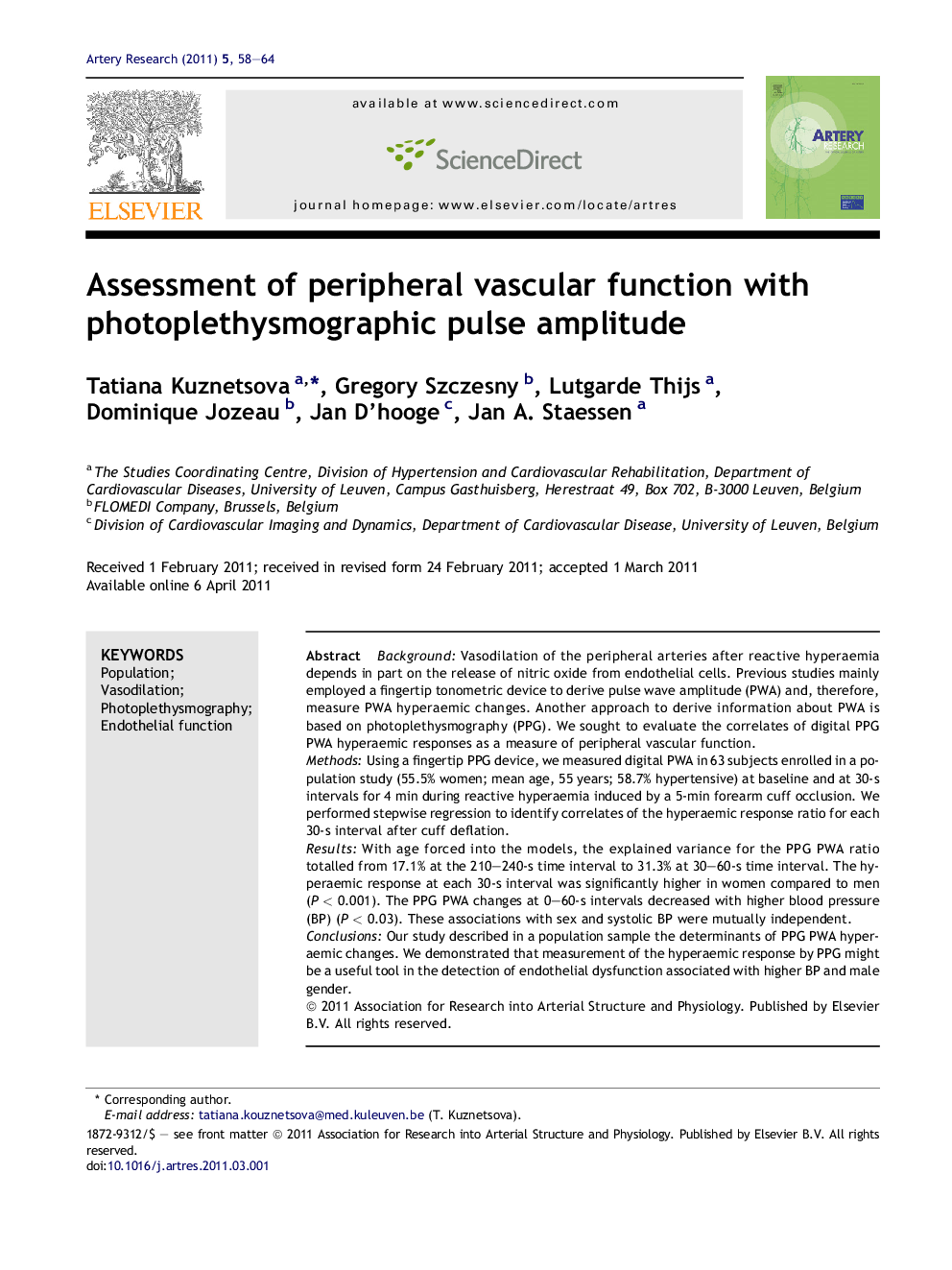| Article ID | Journal | Published Year | Pages | File Type |
|---|---|---|---|---|
| 2891933 | Artery Research | 2011 | 7 Pages |
BackgroundVasodilation of the peripheral arteries after reactive hyperaemia depends in part on the release of nitric oxide from endothelial cells. Previous studies mainly employed a fingertip tonometric device to derive pulse wave amplitude (PWA) and, therefore, measure PWA hyperaemic changes. Another approach to derive information about PWA is based on photoplethysmography (PPG). We sought to evaluate the correlates of digital PPG PWA hyperaemic responses as a measure of peripheral vascular function.MethodsUsing a fingertip PPG device, we measured digital PWA in 63 subjects enrolled in a population study (55.5% women; mean age, 55 years; 58.7% hypertensive) at baseline and at 30-s intervals for 4 min during reactive hyperaemia induced by a 5-min forearm cuff occlusion. We performed stepwise regression to identify correlates of the hyperaemic response ratio for each 30-s interval after cuff deflation.ResultsWith age forced into the models, the explained variance for the PPG PWA ratio totalled from 17.1% at the 210–240-s time interval to 31.3% at 30–60-s time interval. The hyperaemic response at each 30-s interval was significantly higher in women compared to men (P < 0.001). The PPG PWA changes at 0–60-s intervals decreased with higher blood pressure (BP) (P < 0.03). These associations with sex and systolic BP were mutually independent.ConclusionsOur study described in a population sample the determinants of PPG PWA hyperaemic changes. We demonstrated that measurement of the hyperaemic response by PPG might be a useful tool in the detection of endothelial dysfunction associated with higher BP and male gender.
